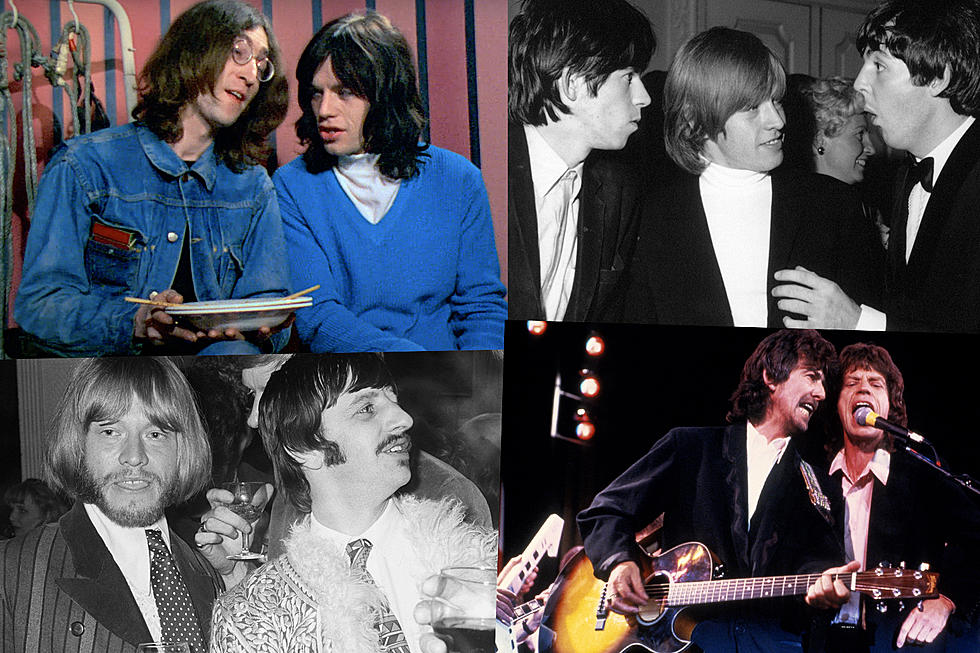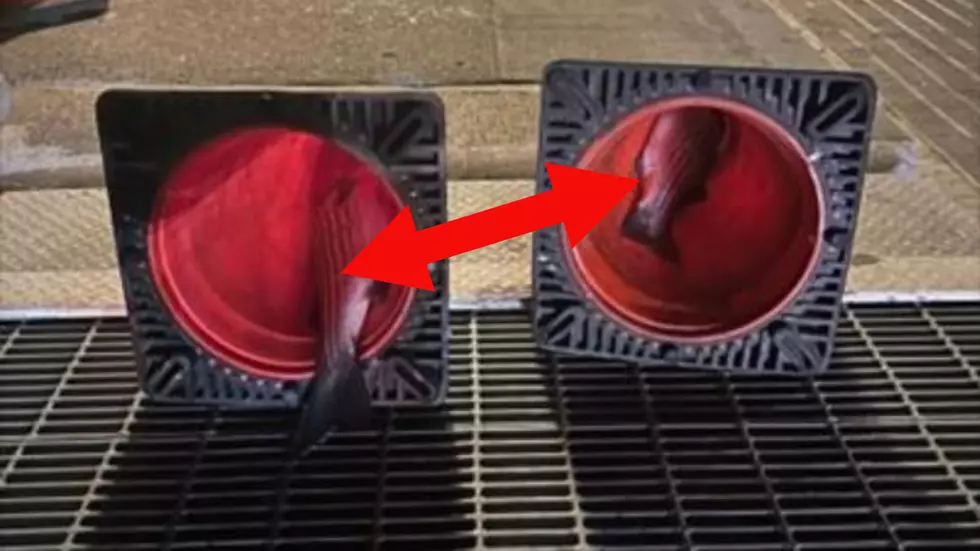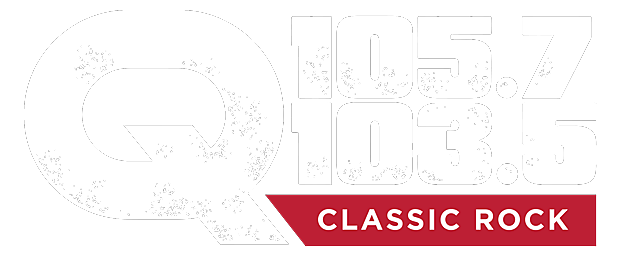
Eight Times the Beatles and Rolling Stones Worked Together
Like most musical rivalries, the vast majority of controversies between the Beatles and the Rolling Stones were created in the editorial offices of media outlets. While there have been some moments of real fireworks, they are as rare as examples of the two bands working together.
Both groups came out of a relatively small music scene, centered on a few streets in London in the early ‘60s. They were sometimes seen together – probably talking about their accounts of trying to make it big – and they often shared session musicians, notably keyboardist Billy Preston, and studio staff, like Glyn Johns. But the bands hardly ever collaborated musically.
If it’s true Paul McCartney may be heard on an upcoming Stones album, it will be the highest-profile example of collaboration between the bands and will most likely overshadow their brief work together in the past.
"I Wanna Be Your Man"
As an illustration of how casual the British rock ’n’ roll scene was before the explosion hit, the Lennon-McCartney song “I Wanna Be Your Man” became the Rolling Stones’ second single as a result of a chance meeting on a London street in 1963. Various accounts exist, but the result was that John Lennon and Paul McCartney, on being told the Stones needed a new song, followed manager Andrew Loog Oldham to the studio where Mick Jagger and band were working, and completed the song they had already started while the Stones looked on.
“We knew them by then, and we were rehearsing, and Andrew brought Paul and John down to the rehearsal,” Jagger recalled. “They said they had this tune; they were really hustlers then. I mean the way they used to hustle tunes was great: ‘Hey, Mick, we’ve got this great song.’ So they played it, and we thought it sounded pretty commercial, which is what we were looking for.”
Released in November 1963, "I Wanna Be Your Man" became the Stones’ second single, reaching No. 12 and becoming their first Top 20 hit. It was also the first song to be featured when the long-running BBC TV show Top of the Pops started its run on Jan. 1, 1964. Jagger and Keith Richards both credited the experience of watching the song being created as their inspiration to form their writing partnership.
Listen to the Rolling Stones' 'I Wanna Be Your Man'
According to McCartney, the original plan for “I Wanna Be Your Man” was for it to be a showcase track for Ringo Starr, who sang the version heard on the Beatles’ second album, With the Beatles, which was also released in November 1963. The Fab Four had already begun recording their take by the time the song was completed for the Stones. In 1980, Lennon – who was often publicly dismissive of the Stones – noted that “it was a throwaway. The only two versions of the song were Ringo and the Rolling Stones. That shows how much importance we put on it: We weren’t going to give them anything great, right?”
Listen to the Beatles' 'I Wanna Be Your Man'
"Money (That’s What I Want)"
It’s more of a cross-pollination than a collaboration, but Barrett Strong’s 1959 original version of "Money (That's What I Want)" was the first hit for Berry Gordy’s Motown label, reaching No. 23 the following year. It wasn’t a hit in Britain, but the Beatles discovered it at manager Brian Epstein’s record store and covered the song during their failed audition for Decca Records in 1962. They released a version as the final track of With the Beatles in 1963. While it’s not known for certain if an amount of backroom gossip led to it, the Stones tracked their version of “Money” two weeks before the Beatles’ LP was released, with their take arriving in January 1964 on The Rolling Stones EP.
Listen to the Beatles' 'Money (That's What I Want)'
Listen to the Rolling Stones' 'Money'
"Yellow Submarine"
On June 1, 1966, the Beatles spent the day adding sound effects to their song “Yellow Submarine.” Among those who contributed was the Stones’ Brian Jones, a close friend of Lennon and McCartney. He’s heard in the backing vocals and also provides the sound of clinking glasses.
Watch the Beatles' 'Yellow Submarine' Video
"You Know My Name (Look Up the Number)"
Brian Jones was invited to another Beatles session in June 1967. He’d been asked to add a musical track to “You Know My Name (Look Up the Number).” It was assumed it would be a guitar part. “We thought he’d bring a guitar, but he opens this case and there is a saxophone,” McCartney said later. “We said, ‘Well, we have this little number’ … and Brian plays the sax. It’s not terribly well played – a ropey sax solo – but it was just what we wanted. Brian was very good like that.” It was the last time they’d interact with Jones: His wayward behavior soon left Lennon regarding him as “one of them guys that you dreaded he’d come on the phone.”
Listen to the Beatles' 'You Know My Name (Look Up the Number)'
"Baby, You’re a Rich Man"
As Lennon grappled with the emergency of Britain’s counterculture, he amalgamated two incomplete tracks into “Baby, You’re a Rich Man,” which was released as the B-side to “All You Need is Love” in July 1967. Mick Jagger attended one of the sessions and wound up supplying backing vocals toward the end of the song. Perhaps the experience inspired him to follow the psychedelia concept the Beatles were embracing on the recently completed Sgt. Pepper's Lonely Hearts Club Band. Jagger was later accused of attempting to blankly copy the Beatles’ work.
Listen to the Beatles' 'Baby, You’re a Rich Man'
"We Love You"
As the Rolling Stones worked on their 1967 album Their Satanic Majesties Request, Jagger and Richards decided to write a tribute to the fans who’d kept faith with them during their recent drug arrests. They came up with “We Love You,” which was released in August 1967 as a deliberate nod to the Beatles’ “All You Need is Love.” The song features Lennon and McCartney on uncredited backing vocals. One version of the album cover also features small pictures of all four members of the Beatles, a reaction to the Beatles’ mention of the Stones on their famous Sgt. Pepper art.
Watch the Rolling Stones' 'We Love You' Video
"Yer Blues"
The Rolling Stones Rock and Roll Circus marked the only time members of the Stones and Beatles performed onstage together. As part of the TV spectacular that remained unreleased for years, John Lennon and Keith Richards played the Beatles’ “Yer Blues” in a band called the Dirty Mac. The performance also included Eric Clapton, Yoko Ono and Mitch Mitchell. Lennon, who introduced himself as “Winston Leg-Thigh,” based the moniker on Fleetwood Mac and oversaw the one-off performance from Dec. 11, 1968.
Watch 'Yer Blues' From 'The Rolling Stones Rock and Roll Circus'
"I Saw Her Standing There"
In another example that there was always more connecting than disconnection between the British giants, Jagger inducted the Beatles into the Rock & Roll Hall of Fame in 1998, two years after its first ceremony. It was a rather shakily organized night with fellow inductees the Beach Boys causing controversy, while Starr was noticeably drunk during the proceedings (McCartney declined to attend). Everyone else – including Bruce Springsteen, Neil Young and Bob Dylan – hit the stage for the closing jam, which included Jagger delivering a verse of the Beatles' “I Saw Her Standing There.”
During his speech, Jagger said, “We had … a lot of rivalry in those early years and a little bit of friction, but we always ended up friends. And I like to think we still are, because they were some of the greatest times of our lives, and I’m really proud to be the one that leads them into the Rock & Roll Hall of Fame.”
Watch the Beatles' Rock Hall Jam
The Best Song From Every Beatles Album
More From Q 105.7







